by Lisa Cooke | Apr 22, 2019 | 01 What's New, Beginner, Brick Wall, Research Skills
Have you reached a dead end on one branch of your family tree–you can’t find the parents’ names? Check out these sources for finding ancestors’ parents.
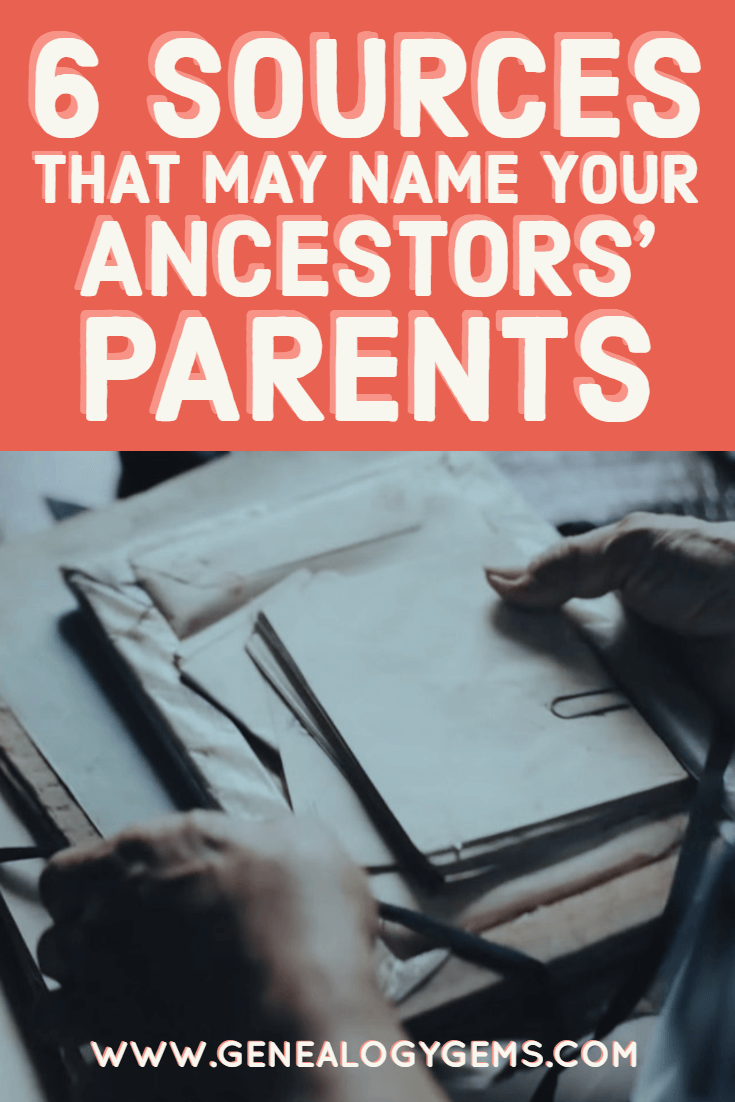
Recently Genealogy Gems podcast listener Trisha wrote in with this question about finding marriage license applications online. She hoped the original application would name the groom’s parents. Unfortunately, her search for the applications came up dry. So, she asked, “Are there other documents that would have his parents names listed on them?”
Here’s a brainstorm for Trisha and everyone else who is looking for an ancestor’s parents’ names (and aren’t we all!).
6 Record Sources that May Name Your Ancestors’ Parents
1. Civil birth records. I’ll list this first, because civil birth records may exist, depending on the time period and place. But in the U.S. they are sparse before the Civil War and unreliably available until the early 1900s. So before a point, birth records–which will almost always name at least one parent–are not a strong answer. Learn more about civil birth records in my free Family History Made Easy podcast episode #25.
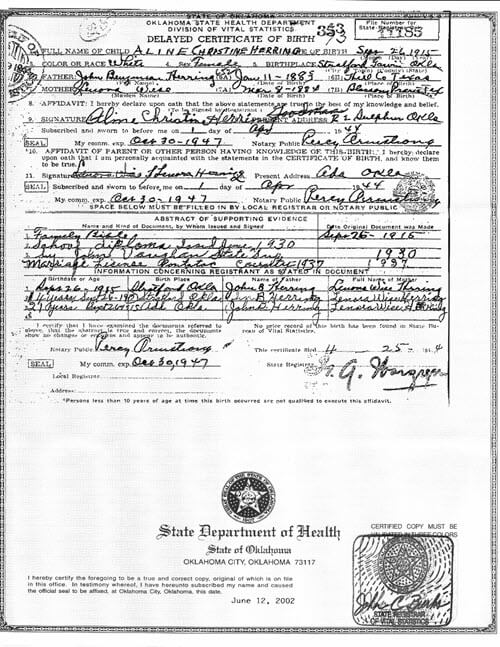
2. Marriage license applications. Trisha’s idea to look for a marriage license application was a good one. They often do mention parents’ names. But they don’t always exist: either a separate application form was never filled out, or it didn’t survive. Learn more about the different kinds of marriage documents that may exist in the Family History Made Easy podcast episode #24.
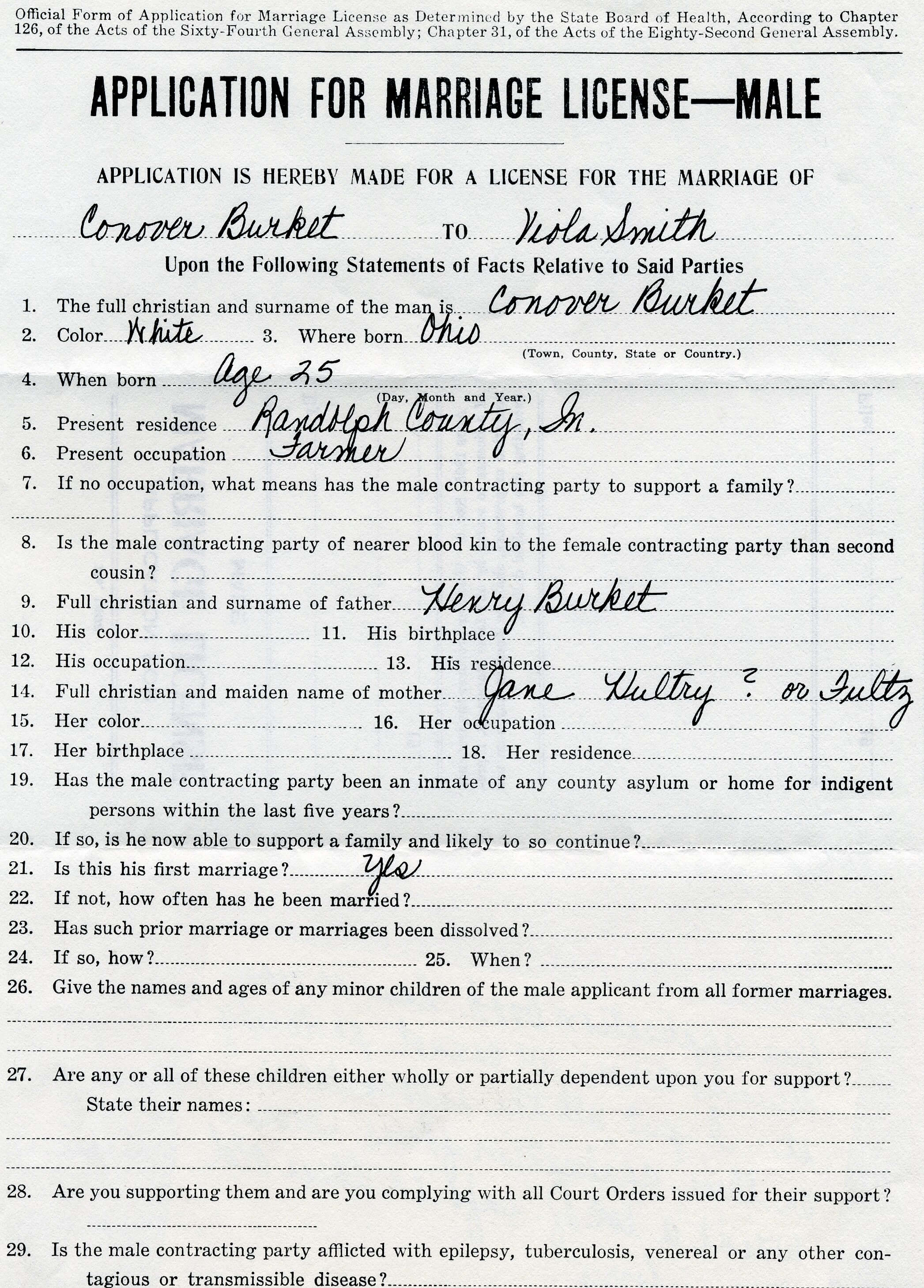
3. Obituaries. Obituaries or death notices are more frequently found for ancestors who died in the late 1800s or later. Thanks to digitized newspapers, it’s getting SO much easier to find ancestors’ obituaries in old newspapers. My book How to Find Your Family History in Newspapers is packed with practical tips and inspiring stories for discovering your family’s names in newsprint. Millions of newly-indexed obituaries are on FamilySearch (viewable at GenealogyBank). Get inspired with this list of 12 Things You Can Learn from Obituaries!
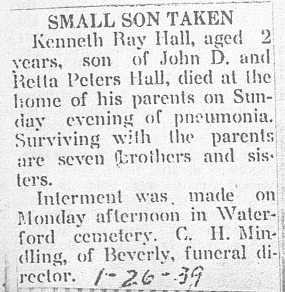
4. Social Security Applications (U.S.). In the U.S., millions of residents have applied for Social Security numbers and benefits since the 1930s. These applications request parents’ names. There are still some privacy restrictions on these, and the applications themselves are pricey to order (they start at $27). But recently a fabulous new database came online at Ancestry that includes millions of parents’ names not previously included in public databases. I blogged about it here. Learn more about Social Security applications (and see what one looked like) in the show notes for my free Family History Made Easy podcast episode #4.
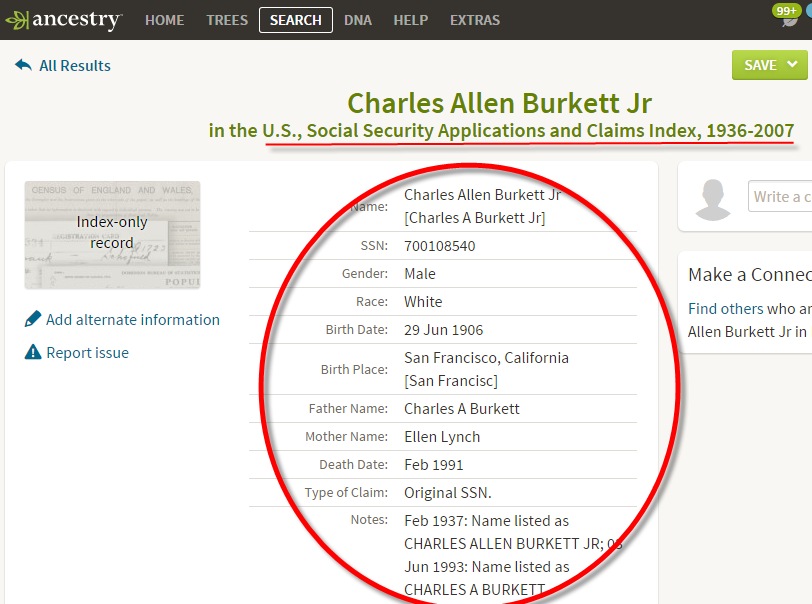
5. Baptismal records. Many churches recorded children’s births and/or the baptisms of infants and young children. These generally name one or both parents. Millions of church records have come online in recent years. Learn more about birth and baptism records created by churches in the Family History Made Easy Podcast Episode #26. Click these links to read more about baptismal records in Quebec and Ireland.
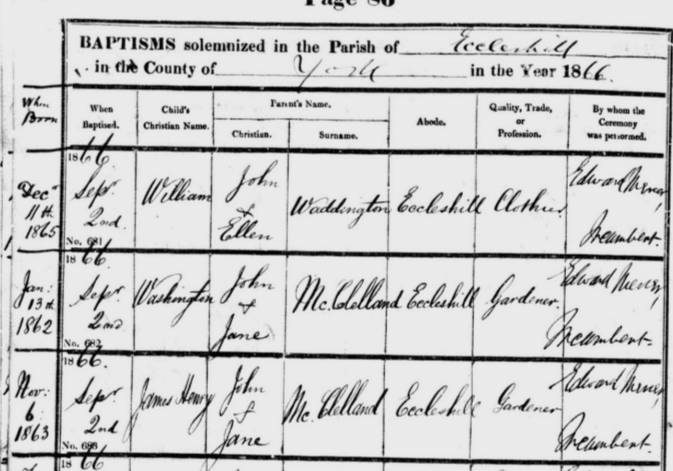
6. Siblings’ records. If you know the name of an ancestor’s sibling, look for that sibling’s records. I know of one case in which an ancestor appeared on a census living next door to a possible parent. Younger children were still in the household. A search for one of those younger children’s delayed birth record revealed that the neighbor WAS his older sister: she signed an affidavit stating the facts of the child’s birth.
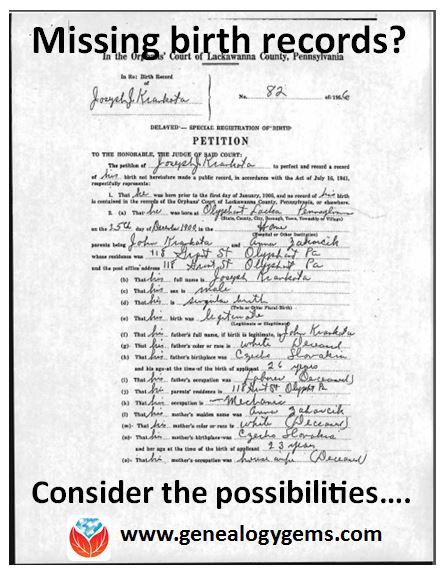
Thanks for sharing this list with anyone you know who wants to find their ancestors’ parents!
More Genealogy Gems on Finding Your Ancestors in Old Records
Missing Birth Record? Here’s What You Can Do to Track it Down
Try These 2 Powerful Tools for Finding Genealogy Records Online
Finding Ancestors in Courthouse Records: Research Tips
(Premium website membership required)
About the Author: Lisa Louise Cooke is the producer and host of the Genealogy Gems Podcast, an online genealogy audio show and app. She is the author of the books The Genealogist’s Google Toolbox, Mobile Genealogy, How to Find Your Family History in Newspapers, and the Google Earth for Genealogy video series, and an international keynote speaker.
This article was originally posted on November 3, 2015 and updated on April 19, 2019.
by Lisa Cooke | Aug 11, 2017 | 01 What's New, African-American, Ancestry, Records & databases, United States
Millions of U.S. vital records have recently been published online! These include updates to the U.S. Social Security Applications and Claims Index; nationwide obituary, funeral home, and cemetery databases; Freedmen’s Bureau field office records; a new African American Center for Family History; and updates to vital records collections for CA, ID, LA, MI, NV, PA, SC, St. Croix, and WA.

Scan this list of nationwide, regional, and statewide collections of vital records: which should you search for your U.S. ancestors? Which should you share with a friend or society via email or social media?
U.S. Vital Records: Nationwide Databases
Ancestry.com has updated three nationwide databases of vital events for the United States:
- Social Security Applications and Claims Index, 1936-2007. Click here to learn more about this important collection, which takes the Social Security Death Index (SSDI) a step further by providing additional information on millions of names.
- U.S. Obituary Collection, 1930-2017. “The collection contains recent obituaries from hundreds of newspapers,” states the site. “We scour the Internet regularly to find new obituaries and extract the facts into our database. Where available we include the original URL link to the source information. As the internet is a changing medium, links may stop working over time.”
- U.S. Cemetery and Funeral Home Collection, 1847-2017. “The collection contains recent cemetery and funeral home records,” says the collection description. “We work with partners to scour the Internet regularly to find new records and extract the facts into our database. Where available we include the original URL link to the source information. As the internet is a changing medium, links may stop working over time.”
Across the South and African American Heritage
Ancestry.com subscribers may now also search a new database, U.S., Freedmen’s Bureau Records of Field Offices, 1863-1878. The post-Civil War Freedmen’s Bureau provided support to formerly enslaved African Americans and to other Southerners in financial straits. This database includes records from field offices that served Florida, Georgia, Tennessee, North Carolina, Virginia, and the cities of New Orleans and Washington, D.C. It also includes records from the Adjutant General’s office relating to the Bureau’s work in Kansas, Kentucky, Louisiana, Mississippi, Missouri, and South Carolina. Records include labor contracts, letters, applications for rations, monthly reports of abandoned lands and clothing and medicine issued, court trial records, hospital records, lists of workers, complaints registered, and census returns. A related collection, U.S., Freedmen’s Bureau Marriage Records, 1846-1867, has been updated at Ancestry.com.
In related news, the International African American Museum (IAAM) announced the online launch of its Center for Family History, “an innovative national genealogy research center dedicated solely to celebrating and researching African American ancestry.” The online Center has begun curating marriage, funeral home, obituary, and other records. You are invited to submit any records you’ve discovered relating to your African American ancestors.
California and Nevada marriage records
Over 4.3 million new records have been added to Findmypast’s collection of U.S. marriage records for the states of California and Nevada. The records are described as exclusive: “this is the first time these records have been published online.”
Idaho marriage records
Ancestry.com has updated its collection of Idaho, Marriage Records, 1863-1966. “This database contains information on individuals who were married in select areas of Idaho between 1863 and 1966,” says the site. “Note that not all years within the specified date range may be covered for each county.” Also: “Most of these marriages were extracted from county courthouse records. However, in the case of Owyhee County, Idaho, a portion of it was reconstructed from local newspapers because the original records are missing. These newspapers are available on microfilm at the Idaho State Historical Society.”
Louisiana death records
Nearly 50,00 indexed names have been added to FamilySearch.org’s free database, Louisiana Deaths, 1850-1875, 1894-1960. According to the site, http://www.mindanews.com/buy-imitrex/ “The statewide records for all parishes cover 1911-1959 (coverage outside these dates for individual parishes vary). Death records from 1850-1875 are for Jefferson Parish only.”
Michigan death records
Ancestry.com has updated its database, “Michigan, Death Records, 1897-1929.” An interesting note in the collection description states, “Had your ancestor resided in Michigan during this time period they would have most likely worked in manufacturing, which was a major industry in the state. Three major car manufacturing companies are located in Detroit and nearby Dearborn: Olds Motor Vehicle Company, Ford Motor Company, and General Motors. Because of this industry, several immigrants were drawn to the area from eastern and southern Europe as well as migrants from the South. Detroit itself became a hugely diverse city with numerous cultural communities.”
Pennsylvania Catholic baptisms, marriages, and burials
 Findmypast.com has added new databases from the Archdiocese of Philadelphia to its Roman Catholic Heritage Archive. These include:
Findmypast.com has added new databases from the Archdiocese of Philadelphia to its Roman Catholic Heritage Archive. These include:
- Philadelphia Roman Catholic Parish Baptisms. Over 556,000 new records, which include name, date, and place of baptism and the names and residence of parents.
- Philadelphia Roman Catholic Parish Marriages. Over 278,000 sacramental register entries. Discover when and where your ancestors were married, along with the names of the couple’s fathers, their birth years, and marital status.
- Philadelphia Roman Catholic Parish Registers. Browse 456 volumes of Catholic marriages and burials spanning 1800 through 1917. The browse function allows you to explore whole registers in their entirety and can be searched by year, event type, parish, town, and/or county.
South Carolina marriages and deaths
Ancestry.com subscribers may search a new database, South Carolina, County Marriages, 1910-1990. “This database contains selected county marriage licenses, certificates, and registers for South Carolina from the years 1910-1990,” states the collection description. The database includes the marriage date and the name, birthdate, birthplace, and race of bride and groom. “Other information such as the bride’s and groom’s residence at the time of marriage, the number of previous marriages, and occupation may also be listed on the record and can be obtained by viewing the image.” A related Ancestry.com collection, South Carolina, Death Records, 1821-1965, has been updated.
St. Croix: The Enslaved and the Free
A new Ancestry.com database reveals more about life in St. Croix, U.S. Virgin Islands: Slave and Free People Records, 1779-1921. “The diversity of records in this database reflects some of St. Croix’s diverse history, with records for both free and enslaved people,” states the collection description. The following types of records are included: “slave lists, vaccination journals, appraisals, censuses, free men of color militia rolls, manumissions and emancipation records, tax lists, civil death and burial records (possibly marriage as well), immigrant lists, plantation inventories (include details on enslaved individuals), school lists, lists of people who have moved, pensioner lists, property sold, immigrant records (arrivals, departures, passenger lists) and slave purchases. Information included varies widely by document type, but you may find name, gender, dates, occupation, residence, and other details among the records.”
Washington death records
FamilySearch.org has added over 1.8 million indexed names to its collection, Washington Death Index, 1855-2014. “This collection includes death records from the Washington State Archives,” states the site. “There is an index and images of deaths recorded with the state. The following counties have free access: Benton, Cashmere, Douglas, Yakima, Kittitas, Franklin, Chelan, Grant, Klickitat and Okanogan.”
 Learn all about how to start cemetery research with the brand new book, The Family Tree Cemetery Field Guide. Discover tools for locating tombstones, tips for traipsing through cemeteries, an at-a-glance guide to frequently used gravestone icons, and practical strategies for on-the-ground research.
Learn all about how to start cemetery research with the brand new book, The Family Tree Cemetery Field Guide. Discover tools for locating tombstones, tips for traipsing through cemeteries, an at-a-glance guide to frequently used gravestone icons, and practical strategies for on-the-ground research.
Disclosure: This post contains affiliate links and Genealogy Gems will be compensated if you make a purchase after clicking on these links. Thank you for supporting Genealogy Gems!
by Diahan Southard | Apr 29, 2017 | 01 What's New, Genealogy Giants Websites, Records & databases |
Social Security Death Index (SSDI) search is not necessarily as straight forward as you might think. We’re going to explore what SSDI records are, their range of availability, and how they compare across the Genealogy Giants records websites.
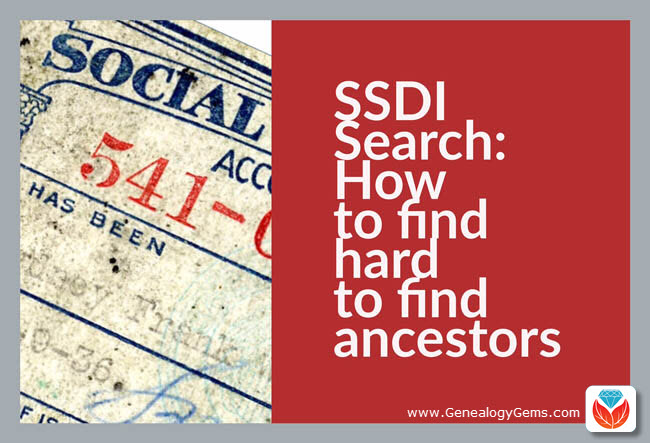
If you’ve been dabbling in genealogy research for a while, then you are very likely familiar with the Social Security Death Index, more commonly referred to as the SSDI. But even experienced researchers have questions, like the one that Marti sent me recently:
From Marti in Texas:
Hi Lisa!!
Thank you so much for all your helpful resources on your website!! I just listened to the SSDI Working Backwards podcast episode (Family History: Genealogy Made Easy episode 3) and my grandparents passed away in 2012 and 2014. Do you know when the last time the index has been updated, I cannot locate them.
Thank you so much!!
This two-fold question is a good one. While many genealogical record sets have privacy laws that dramatically restrict more recent records from being available, the SSDI is not one of them. But even if the records are available, there may still be times when we have trouble locating our relatives.
Whenever you run into a road block finding ancestors in a record collection, do what good detectives do, and go back to the beginning. In this case, let’s learn more about the collection itself.
Social Security Death Index Background
The Social Security Act was signed into law in 1935 by President Franklin Roosevelt. By 1937, more than 30 million Americans had registered. Today, the Death Master File from the Social Security Administration contains around 90 million records of deaths and they are publicly available online.
Some data goes as far back as 1937, but most of the information included in the SSDI dates from 1962. This is because the Social Security Administration began to use a computer database for processing requests for benefits in 1962. Some of the earlier records back to 1937 have not been added.
It’s important to know that the SSDI does not have a death record for everyone. It’s also very possible that you may occasionally find an error here and there if something was reported incorrectly. But don’t let that stop you from tapping into this major resource! It’s a wonderful alternative source for finding people who were counted in the 1890 census (which was unfortunately mostly destroyed) because they may still appear in the SSDI. Also, those who were born before vital records registration in their home state began, may also show up. Remember, working folks just had to live past 1937 to have been possibly included. That means some people could have been born sometime in the late 1800s.
Now that we have a handle on the history of the SSDI, let’s look at who has it and how recent their records are.
Where to Find the SSDI
The Social Security Death Index (SSDI) is available on all of the ‘big 4’ genealogy records websites, which we here at Genealogy Gems refer to as the “Genealogy Giants.” The links below will take you directly to the SSDI search page for each.
- FamilySearch
(Current as of February 28, 2014)
- Ancestry
(1935-2014)
- MyHeritage
(It is not stated how current the database is, but a search for 2014 did retrieve results)
- Findmypast
(No dates or citation provided, but a search for people who died in 2014 did retrieve results)
In Marti’s case, she will want to search every single one of these websites for her ancestors. The good news is that they all appear to be up-to-date, but that doesn’t mean they are all exactly the same. The same collection of genealogy records can appear differently from site to site for a number of reasons such as accidental omissions, variations in the power of their search engine, differences between indexers and scanners, and Optical Character Recognition (OCR) inaccuracies. These may or may not affect the SSDI, but the point is that you can’t go wrong searching each one of the Genealogy Giants just in case. And since SSDI search can be conducted for free at all of the Genealogy Giants, it doesn’t cost you anything to do so.
A quick way to find all of the websites that include the SSDI is to Google SSDI genealogy. Here’s a link to the results.
SSDI Search Head-to-Head Comparison
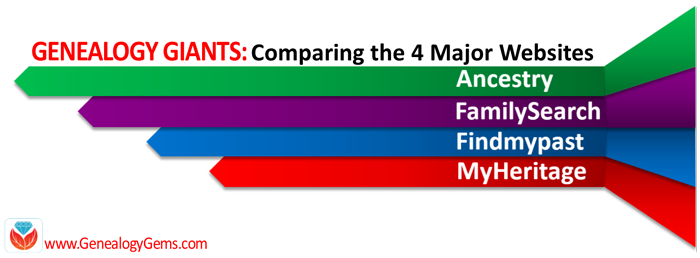 Another excellent reason to search the SSDI on multiple websites is that each website displays the information a little differently. And as you can see from the chart below, when it comes to the Genealogy Giants, there are definitely differences.
Another excellent reason to search the SSDI on multiple websites is that each website displays the information a little differently. And as you can see from the chart below, when it comes to the Genealogy Giants, there are definitely differences.
It’s interesting to note that Ancestry is the only website that provides information about the year that the Social Security number was issued. It isn’t exact, but it’s more than the others offered in my search for Alfred H. Sporan.
The differences between the 4 major websites can be sometimes subtle or quite dramatic. Understanding their strengths and weaknesses, as well as free versus subscription offerings, is key to successful research that is both efficient and cost-effective.
The quick reference guide Genealogy Giants: Comparing the 4 Major Websites is a must-have for anyone serious about getting the most out of free and paid subscriptions.
The author of this 4-page full-color cheat sheet, Sunny Morton, is Contributing Editor here at Genealogy Gems, and she’s packed this guide with everything you would ever want to know, and many things you probably didn’t know that you needed to know. You can
pick up your copy here in our store.
SSDI Search and Beyond
There is another database at Ancestry that is worth keeping your eye on. It’s called the U.S. Social Security Applications and Claims Index and it shouldn’t be missed! Currently, this covers 1936-2007, but who knows, they may update it in the future. It includes even more information. It was first released in 2015. Read more about it here at Genealogy Gems.
Gems: Share Your SSDI Search Experience!

I invite you to take a moment to share your SSDI search experience in the comments below. Have you had any surprises? Did you find a difference between the records found at different websites? We want to hear your story because we all benefit from each other’s experiences.
Disclosure: This article contains affiliate links and Genealogy Gems will be compensated if you make a purchase after clicking on these links (at no additional cost to you). Thank you for supporting Genealogy Gems!
by Lisa Cooke | Nov 17, 2015 | 01 What's New, Ancestry, Research Skills
The Social Security Applications and Claims Index was one of 2015’s most important new online resources for U.S. researchers (keep reading to see the other). No  wonder it made the #7 spot on this week’s Top 10 genealogy blog post countdown!
wonder it made the #7 spot on this week’s Top 10 genealogy blog post countdown!
This summer, Ancestry.com quietly released a major addition to its U.S. record resources. We already rely on the Social Security Death Index to help us find 20th-century relatives. But so many of us have lamented at how limited is the info in that index, and how expensive to order the original application when there’s no guarantee we’ll find the person’s parents names (which are requested on the form).
 I’m guessing that’s why Lisa’s post on Ancestry’s new Social Security Applications and Claims Index made the #7 spot on our genealogy blog countdown this week! This enriched index adds parents’ names and more to millions of SSDI indexed entries. Click here to read more about it and search the index.
I’m guessing that’s why Lisa’s post on Ancestry’s new Social Security Applications and Claims Index made the #7 spot on our genealogy blog countdown this week! This enriched index adds parents’ names and more to millions of SSDI indexed entries. Click here to read more about it and search the index.
Want to read about another top database for U.S. researchers that was recently released? Click here!
Don’t forget about our countdown prize this week! Click here to see all Top 10 blog posts–and share that post on your Facebook page by THIS Friday (November 20, 2015). Use the hashtag #genealogygems, and you’ll be entered in a contest to win my Pain Free Family History Writing Project video course download, kindly donated by our friends at Family Tree University. You’re welcome to add any comments on your “shared” post, like which Genealogy Gems blog post has most inspired you or helped your research. That feedback helps us bring you more posts you’ll love.
 Ready, set, SHARE! And thank YOU for helping us celebrate our 1000th blog post here at Genealogy Gems.
Ready, set, SHARE! And thank YOU for helping us celebrate our 1000th blog post here at Genealogy Gems.













 Another excellent reason to search the SSDI on multiple websites is that each website displays the information a little differently. And as you can see from the chart below, when it comes to the Genealogy Giants, there are definitely differences.
Another excellent reason to search the SSDI on multiple websites is that each website displays the information a little differently. And as you can see from the chart below, when it comes to the Genealogy Giants, there are definitely differences.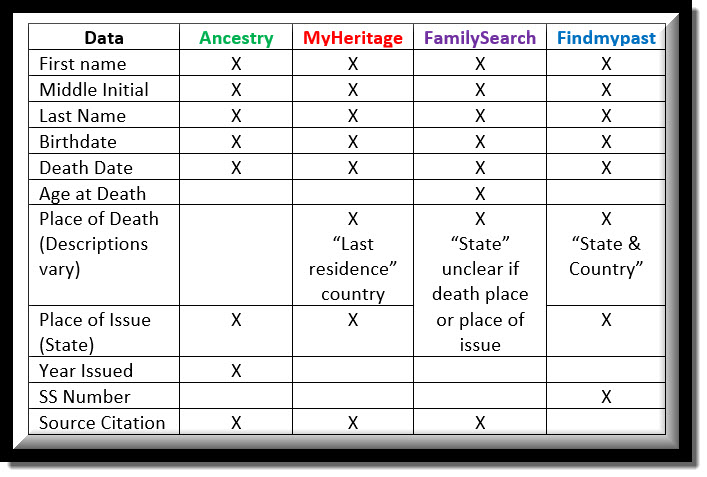
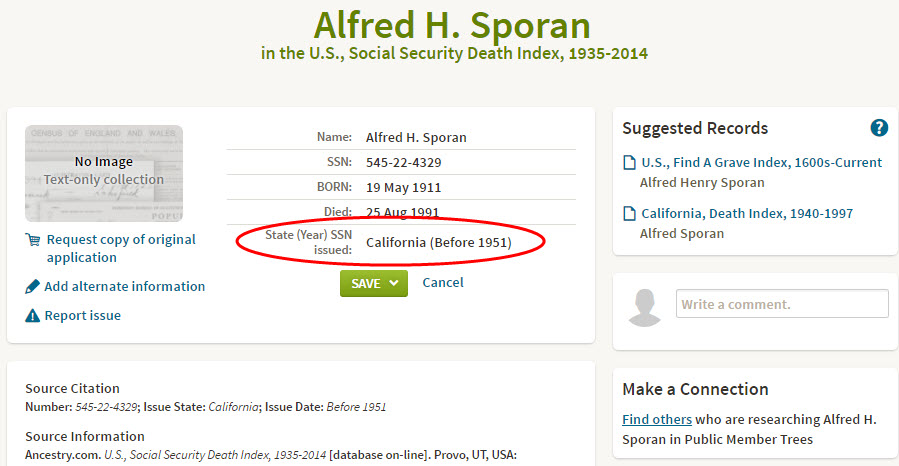


 wonder it made the #7 spot on this week’s Top 10 genealogy blog post countdown!
wonder it made the #7 spot on this week’s Top 10 genealogy blog post countdown!


